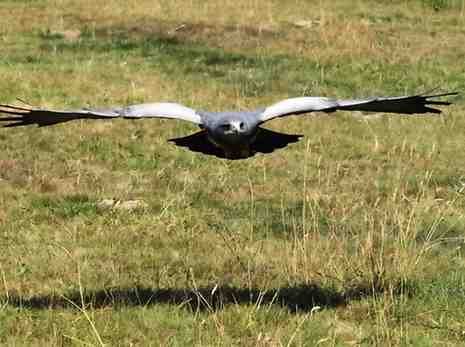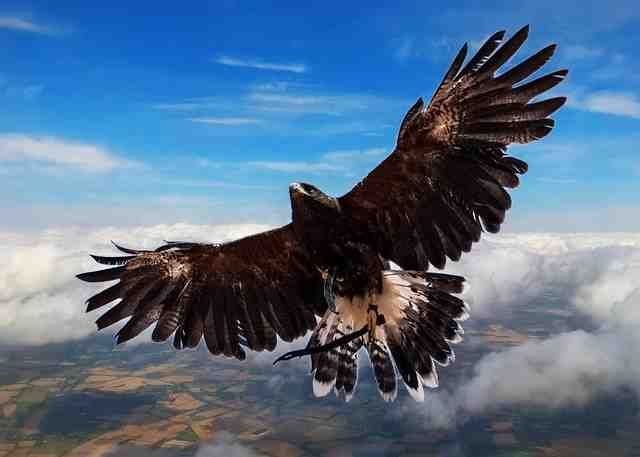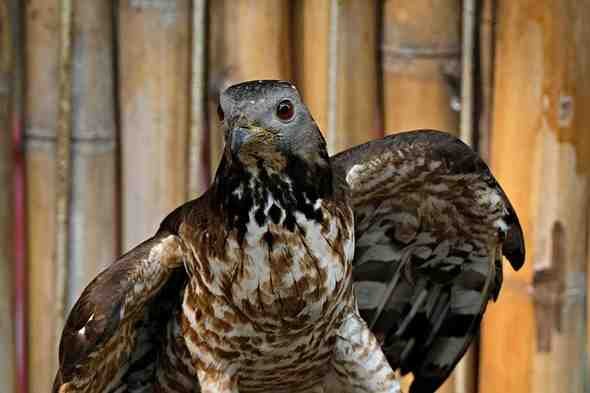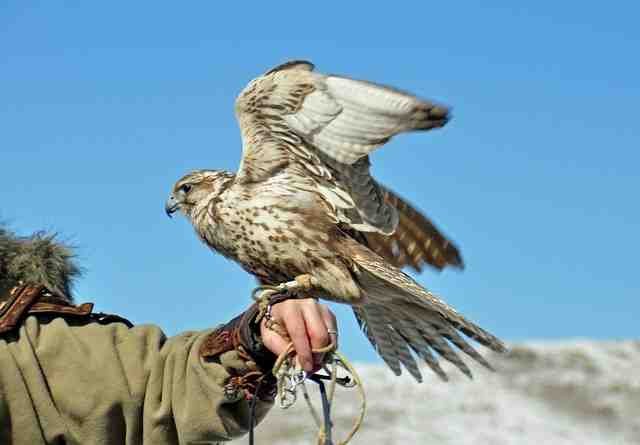Hawks: The Complete Guide to Nature’s Fearless Sky Predators (2025)

Few birds in nature command the respect and admiration that hawks do. With their keen eyesight, powerful wings, and unbeatable hunting instincts, hawks are among nature’s most skilled hunters.
These birds of prey — belonging to the Accipitridae family — are found on nearly every continent in the world. Their strength, speed, and intelligence are essential to maintaining ecological balance.
Whether they’re soaring high above open fields or soaring through forests, hawks are a symbol of precision and power. But beyond their hunting skills, there are countless aspects of diversity, adaptability, and ecological importance hidden in their world. In this article, we will discuss the types, behavior, symbolic meaning, and all aspects related to their conservation.
Characteristics that make hawks unique
Hawks are diurnal raptors. These medium-sized birds are known for their sharp eyesight, curved beaks, and pointed talons. Hawks are generally smaller and more agile than eagles, so they can fly fast and agile.
A hawk’s binocular vision enables it to see even the slightest movement from hundreds of meters away. According to experts, a hawk’s vision is eight times sharper than that of a human. This ability gives it an unparalleled advantage in detecting prey.
The structure of their wings is adapted to different environments:
Broad-winged hawks are experts in gliding and flying in the air in high altitudes.
Small-winged hawks (such as goshawks) are built for speed and agility, especially in the wild.
Every part of a hawk’s body — from its beak to its legs — is a masterpiece of nature, perfectly adapted for hunting.
Classification and Types of Hawks

Hawks belong to the family Accipitridae, which also includes eagles, hawks, and harriers. There are more than 270 species worldwide, which are mainly divided into two subgroups:
a) Accipiters — small-winged hawks
They have short, rounded wings and a long tail, which enables them to fly easily in dense forests.
Examples:
Northern goshawk (Accipiter gentilis) — known for its ferocity and agility.
Cooper’s hawk (Accipiter cooperii) — common in North America; preys on small birds.
Sharp-shinned Hawk (Accipiter striatus) — The smallest but fastest hawk.
b) Buteos (Buteos) — Broad-winged hawks
These are large hawks with broad wings suitable for gliding. They usually live in open areas and hunt from high places.
Examples:
Red-tailed Hawk (Buteo jamaicensis) — The most common hawk in North America.
Swains’ Hawk (Buteo swainsoni) — Known for its long migrations; travels from North to South America.
Rough-legged Hawk (Buteo lagopus) — Resident of the Arctic regions; migrates south in winter.
Body Structure and Adaptations
The hawk’s body is designed for strength, speed, and accuracy.
Eyes: Located at the front of the head, to judge depth. The abundance of photoreceptor cells in their retinas enables them to see even in ultraviolet light.
Beak: Curved and pointed, ideal for tearing flesh.
Claws: Extremely sharp and with a strong grip — this is their main weapon.
Wings: Wide or narrow depending on the species, which determines the nature of their flight.
Wing color: Provides natural camouflage to protect from predators and blend into the environment.
The combination of speed and accuracy of the hawk makes it the most dangerous predator in the air. Some species, such as the goshawk, can fly at speeds of up to 120 miles per hour (193 kilometers per hour) while hunting.
Hawk behavior and hunting methods
Hawks are solitary birds of prey that rely on silence, speed, and precise timing.
a) High-flying predator
Broad-winged hawks, such as the red-tailed hawk, glide high in the sky, searching for rabbits, mice, or small animals below. They swoop down like lightning when they see prey.
b) Ambush-hunting hawk
Accipiters live in dense forests, where they attack pigeons, songbirds or squirrels suddenly. Their speed and agility among the trees are amazing.
c) Group hunting
Some species, such as the Harris’s hawk (Parabuteo unicinctus), hunt in groups. They cooperatively surround and capture prey, a rare behavior among birds.
Diet includes:
Small animals (mice, rabbits, moles)
Birds (pigeons, doves, etc.)
Reptiles and frogs
Occasionally insects and carrion
Hawks use both a “wait and strike” strategy and active pursuit. Their silent flight and quick reactions do not give prey a chance to escape.
Breeding and Life Cycle
The breeding season for hawks usually begins in the spring. The courtship is characterized by displays of affection and power between the male and female—aerial displays, circling, and loud calls.
Nest: Nests are built in sticks on high trees or cliffs.
Eggs: Usually 1 to 5 eggs are laid.
Incubation: About 30 to 35 days; the female mostly sits while the male brings food.
Chicks: Learn to fly in 6 to 7 weeks.
Most hawk pairs stay together for life and return to the same nest each year. Both parents work together to protect and raise the young.
Migration—The Great Hawk Journey

Many hawk species migrate, traveling thousands of miles in search of food or suitable weather.
For example:
The Swain’s Hawk makes a long journey from North America to Argentina.
Broad-winged hawks fly in large flocks called cattails, gliding on the airwaves to conserve energy.
These flights are not only essential for survival, but also help control insect and rodent populations in different regions.
The role of hawks in the ecosystem
Hawks are keystone predators in ecosystems. They maintain the balance of nature by hunting rodents, small animals, and insects.
Without hawks, these predators could become uncontrolled, damaging crops and causing diseases. Thus, hawks indirectly protect human agriculture and biodiversity.
Hawks are also sensitive to environmental changes, which is why they are called bioindicators — a decrease in their numbers often indicates pollution or environmental imbalance.
Humans and hawks — a historical relationship
Humans have worshipped and admired hawks for centuries.
Ancient Egypt: The god “Horus” was depicted with the head of a falcon, which symbolized the sky, kingship, and protection.
Native American tribes: The falcon was considered a messenger and protector.
Falconry: The practice of training falcons and hawks to hunt dates back more than 4,000 years, especially in the Middle East and Central Asia.
Even today, the falcon is a symbol of strength, focus, and freedom in literature, art, and culture.
Threats and Conservation of Falcons
While many species are protected, some falcons are threatened by human activities.
Major Threats:
Habitat Loss: Deforestation and urban sprawl are destroying nesting sites.
Pesticides: Such as DDT and other toxic chemicals, which affect both prey and falcons.
Poaching: In some places, falcons are hunted or illegally traded.
Climate Change: Temperature and weather changes affect their migration and feeding.
Conservation measures:
Establishing safe nesting sites
Banning toxic chemicals
Public awareness
Monitoring migration via satellite
Hawks are the guardians of the earth’s natural balance — protecting them is like protecting our own environment.
Interesting facts about hawks
A hawk’s eyesight is so sharp that it can spot a mouse from a mile away.
Some hawks dive at speeds of over 150 miles per hour.
Harris’s hawk hunts in groups.
The hawk can turn its head almost 180 degrees.
In movies, the cry of an eagle is often taken from the voice of a red-tailed hawk!
Hawks usually mate for life.
Their talons can exert 200 pounds of pressure per square inch.
Hawks are useful to farmers because they control rodent populations.
The maximum recorded lifespan of a wild hawk is 29 years.
Many hawks can see ultraviolet light, which they use to find signs of prey.
The Symbolism of the Hawk in the Modern World
In modern times, the hawk is considered a symbol of vision, leadership, and strategy. In politics, the word “hawk” is used to refer to people who are strong-willed.
Sports teams, such as the Atlanta Hawks or the Seattle Seahawks, are named after the bird’s strength and dominance.
In photography and wildlife tourism, hawks have become a symbol of freedom — their soaring flight in the blue sky is a reminder of the beauty of nature.
Your Role in Hawk Conservation

Protecting hawks is not just the responsibility of zoologists — everyone can play a role:
Do not use pesticides in gardens and fields.
Support wild bird rehabilitation centers.
Protect trees and open areas where hawks nest.
Report injured or trapped hawks to local authorities.
Educate others about the ecological importance of hawks.
This way, we can ensure the survival of these magnificent sky predators for future generations.
Conclusion: Guardians of the Sky
Hawks are not just hunters, but also guardians of the balance of nature. Their intelligence, agility, and strength have kept them alive for millions of years. As they soar high in the sky, they remind us of freedom, precision, and natural harmony.
Protecting hawks is actually protecting the biological beauty and balance of the Earth. So the next time you see a red-tailed hawk circling in the sky, remember — it is the true emperor of nature, the lord of the skies.
